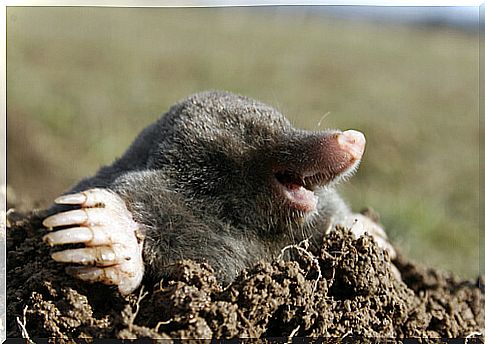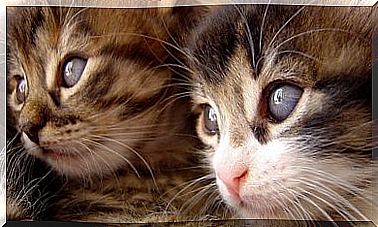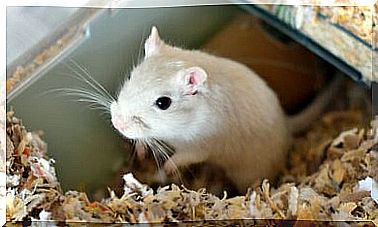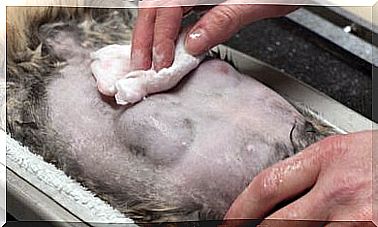The Mole, An Excellent Engineer

It lives in the north of the planet, it is an underground being and shares many customs with shrews, there is even a shrew mole in the family. In this article we will inform you about an animal known for its engineering skills and its ability to spend a lot of time underground .
Characteristics of the mole
It is a placental mammal that, depending on the species, can measure between 2.5 and 20 centimeters and weigh from 12 to 550 grams. Thanks to its fusiform body – like that of aquatic animals – the mole can live underground without problems.
The eyes are tiny and covered with skin; not needing this sense in subterranean life, it has developed more of touch: the muzzle, face, limbs and tail are very sensitive to stimuli.
The mole’s legs are short but very strong, they are provided with nails that allow it to dig and make galleries of up to 150 meters in length. The palms face up and back and work like perfect digging shovels.
Diet and habits of the mole
The mole is an insectivorous animal, whose diet is based mainly on worms, although depending on the time of year it can also eat reptiles, small rodents, roots, tubers and fruits. Its mouth can make toxic saliva that paralyzes its prey; so you can store them alive until you eat them.

Since your metabolism is very fast, you have to eat 50-100% of your weight per day. You cannot go more than 24 hours without eating food; otherwise, it passes away. Most of them get their food underground, with the exception of the shrew mole, which comes to the surface to eat.
For the most part, moles are both diurnal and nocturnal animals, and for every four hours of activity, they sleep the same amount of time. With solitary habits, they are very elusive and difficult to spot. We can only realize that there is a burrow because mounds appear on the ground.
The mole as a plague
Those people who live in the fields or are dedicated to agriculture, consider the mole a pest that causes a lot of damage to crops. Its voracious appetite leaves no worms, plants or roots in a fairly large territory.

Examples of mole species
Within the family of the tálpidos – to which the moles belong – we can find several ‘tribes’ or species, among which we highlight the following as the best known:
1. Common mole
Also known as the European mole, it lives throughout the continent and extends as far as Siberia, mainly in forests, meadows, fields, and gardens. It measures about 15 centimeters, has a short tail and shares many characteristics with the others of its species: a pointed snout, small eyes and shovel-shaped front legs.
2. Star-nosed mole
It is distributed throughout North America, especially on the northeast coast of the United States, and as its name suggests, it has a different nose that includes 22 mobile and flexible pink tentacles, which allow it to increase its sensitivity underground.
In addition, this mole is about 8 inches long, has short dark gray hair, sharp claws, and a long, scaly tail. It reproduces in spring and summer, gestation lasts 45 days and each litter consists of up to six young, which are born without hair.
3. Hairy-tailed mole
Or also called Brewer’s mole, it is a species typical of North America, which prefers open and forested areas with dry soils. It is 15 centimeters long, its skin is dark gray, its eyes are covered with fur, and it has no external ears.
Both the snout and legs are pink, the nose ends in a point and its main feature is its short tail – about three centimeters – with a lot of hair. It feeds on insects and worms, has nocturnal habits and is solitary.









